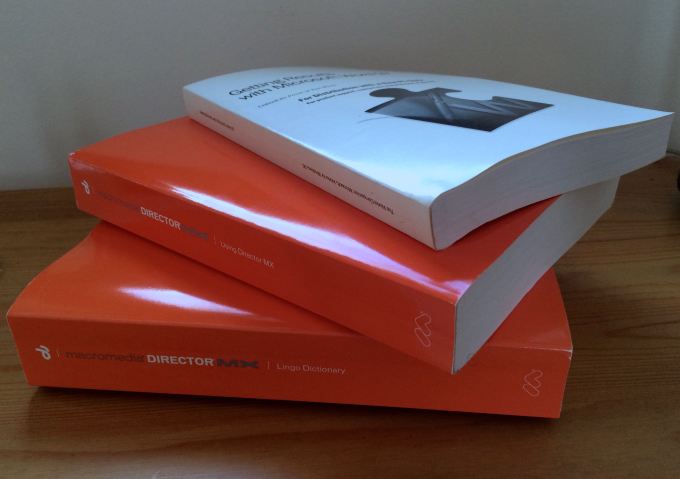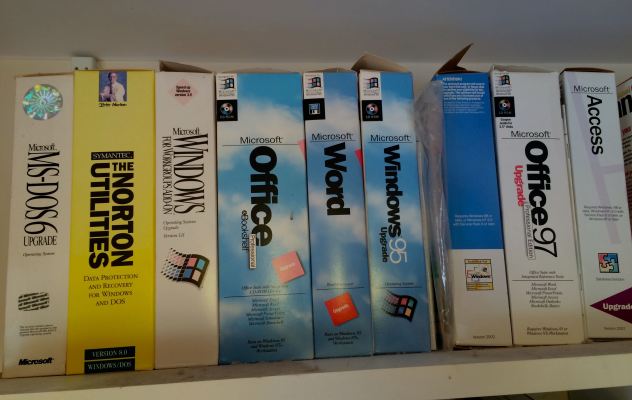I spent a good good part of my weekend clearing my office of a couple of decades of accumulated software. As I discarded dozens of 3.5 floppies and CDs, and recycled piles of boxes and documentation — the flotsam and jetsam of an earlier computing age — I realized just how much easier computing is in 2015.
Not all that long ago, there were no app stores and software came in paper boxes. Upgrades didn’t happen automatically or with the simple click of a button. Instead, every couple of years, people paid hefty fees for the latest and greatest advancements in computing, and everyone had to experience the pain of installing new software for themselves, and trust me, it was often a mind-numbing process.
The good news is that complexity has given way to simplicity, whether we are talking about using, managing, maintaining or even storing software. It all so much easier to handle now.
Many services I use on a regular basis today like Google Docs, GMail, Evernote and Dropbox were all born on the Web or in the cloud and never came in boxes. Heck, my MacBook Air doesn’t have any way to add physical software short of downloading it, even if I wanted to install the old-fashioned way. Today, when I want software, I just go to the app stores or search online, and I usually find exactly what I want, often for free or a very small fee. This is in stark contrast to earlier times when I would have to pay a hefty price for software.
And of course, the beauty of cloud services, which I take for granted now, is that the software is just there when I need it on whatever device I happen to be using — which is at it should be.
Early computing involved the highly deliberate act of loading software. To further complicate matters, I had to create backup copies in case something went wrong with the original because the owner was responsible for the physical media. Eventually I would go through the time and expense of upgrading and doing it all over again — and all the while, those boxes kept accumulating on my shelves.
We see the cloud as the norm now, but if you are over 30, chances are you know it wasn’t always as easy as going to the App Store. In fact, those of us old enough to remember early PCs before big hard drives and graphical user interfaces, know you could run your software on a couple of 5.25 inch floppy disks. Software was more compact back then.
Eventually, it got bulkier, and if you had a big product like Word, it took a pile of 3.5 inch floppies to load it onto your machine. And yes, installing was tedious swapping out those disks, especially if something went awry in the middle (which happened plenty). We progressed to a few CDs and eventually to a DVD or two and it got much more manageable, but even as the media got more efficient, the burden of installation never went away.
Early software came with paper documentation with detailed instructions on how to use it. A complex piece of software like Macromedia Director involved a couple of humongous volumes and required an enormous box to accommodate the books (which took up a fair bit of space on my shelf). Times changed though and software companies, always looking for an edge eventually realized that they could save money if they reduced the size and contents of the packaging. The paper documentation gradually gave way to a Getting Started guide, with the bulk of the instructional materials delivered in the form of online help or a PDF.

Over time, the boxes themselves for the most part, went away with the advent of Web and cloud services.
The low price and ease of installing software has surely simplified my life as an individual user, but it has created a revolution of sorts in the workplace where workers, tired of wrestling with clunky enterprise software, quite rightly want their software to work as well in the office as it does for them at home. What’s more, because of cloud computing and the mobile devices we carry, we don’t have to put up with it — and this dynamic has shifted the balance of power in the workplace. It’s tough for IT to dictate what people can use when they can install software so easily themselves.
Software is no longer some expensive and magical entity only IT can understand. It’s just a couple of clicks away for anyone, even the most non-technical among us. This ease of use has democratized computing. We have come a long way from struggling with installations and reading dense documentation to figure out how an application works.
It hasn’t been all bad for IT either, even while their role has been evolving inside organizations. It has simplified life for them as well. Just like me, they no longer have deal with all of the management headaches associated having software on-premises, and the complexity of managing software is a magnitude higher inside a large organization.
As my personal computing style shifted from the desktop to mobile and the cloud, it happened so gradually, it would be easy to think that this is the way it’s always been. But the act of cleaning my office, drove the point home for me. Computing has changed in a big way, and it’s just so much more straightforward now.
